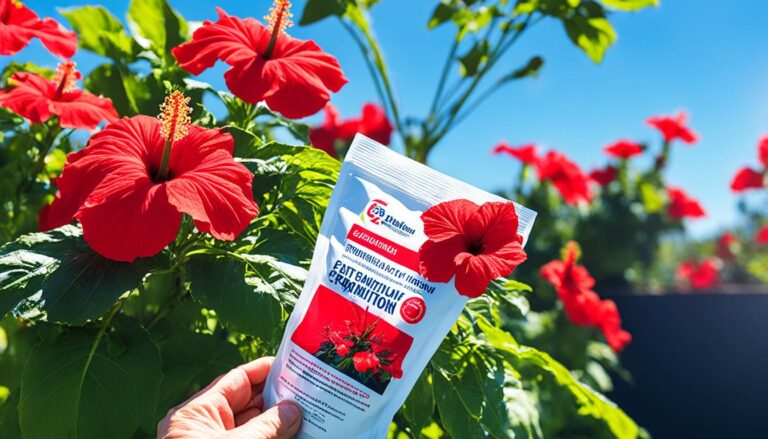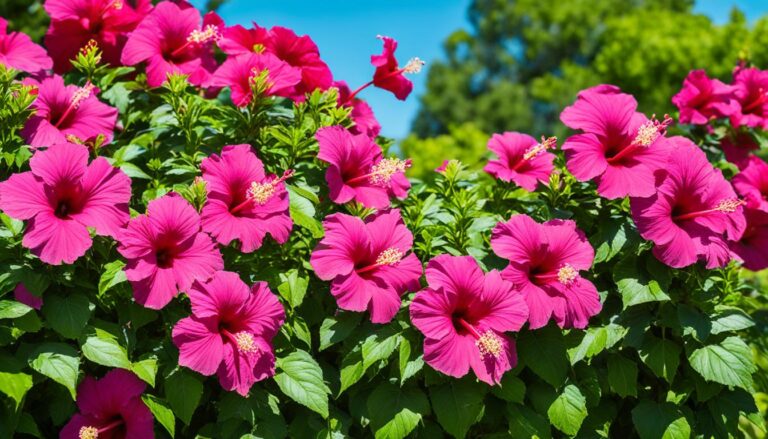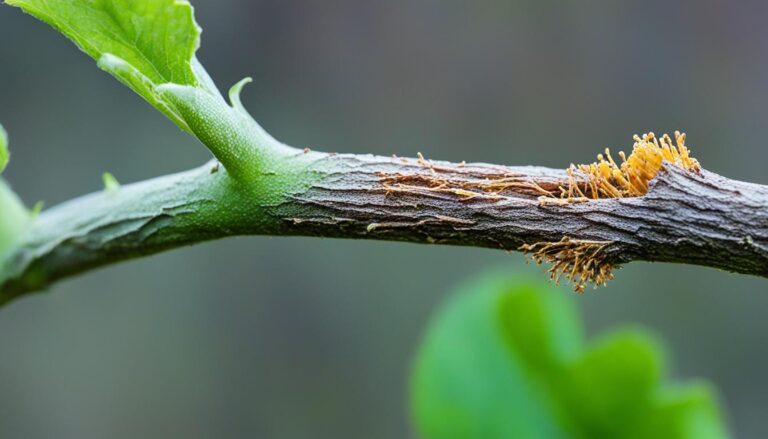Hibiscus Diseases Identification: Spotting and Treating Common Plant Problems
As an avid gardener, I’ve always been captivated by the vibrant beauty of hibiscus flowers. But even these stunning plants aren’t immune to diseases that can quickly turn their lush foliage and colorful blooms into a wilted mess. Have you ever noticed your hibiscus looking less than healthy and wondered what might be wrong?
Identifying hibiscus diseases early is crucial for maintaining the health and longevity of these tropical beauties. From fungal infections to pesky pests, various issues can plague your hibiscus plants. In this article, I’ll guide you through the most common hibiscus diseases, their symptoms, and how to spot them before they wreak havoc on your garden. By the end, you’ll be equipped with the knowledge to keep your hibiscus thriving all season long.
Common Hibiscus Diseases: An Overview
Hibiscus plants, with their vibrant blooms, can fall victim to various diseases. Here’s a quick rundown of the most common ailments:
- Botrytis Blight:
- Grayish-brown spots on petals and leaves
- Fuzzy mold growth in humid conditions
- Affects flowers, buds, and stems
- Leaf Spot:
- Circular spots on leaves, often with dark borders
- Can cause leaf drop if severe
- Thrives in moist environments
- Root Rot:
- Wilting leaves despite moist soil
- Discolored, mushy roots
- Often caused by overwatering or poor drainage
- Powdery Mildew:
- White, powdery coating on leaves and stems
- Stunted growth and distorted leaves
- Spreads quickly in warm, dry conditions
- Hibiscus Chlorotic Ringspot Virus:
- Yellow rings or spots on leaves
- Stunted growth and reduced flowering
- Transmitted by insects or contaminated tools
- Bacterial Leaf Spot:
- Water-soaked spots on leaves
- Spots turn brown or black with yellow halos
- Can cause leaf drop and stem dieback
- Sooty Mold:
- Black, soot-like coating on leaves and stems
- Indirect result of insect infestations
- Blocks sunlight, reducing plant vigor
Each of these diseases presents unique challenges. I’ve found that regular inspection and prompt action are key to keeping hibiscus healthy. By recognizing these common issues, you’ll be better equipped to tackle them head-on and maintain your hibiscus’s stunning beauty.
Leaf Diseases in Hibiscus
Hibiscus plants often face leaf diseases that can compromise their health and beauty. I’ve encountered various leaf issues in my years of gardening, and here are three common problems to watch out for:
Hibiscus Leaf Spot
Hibiscus leaf spot is a fungal disease that causes dark, water-soaked lesions on leaves. These spots typically have a yellow halo and can range from 1/8 to 1/4 inch in diameter. As the disease progresses, affected leaves may turn yellow and drop prematurely. Leaf spot thrives in humid conditions and spreads through water splashing.
To manage hibiscus leaf spot:
- Remove and destroy infected leaves
- Improve air circulation around plants
- Water at the base to avoid wetting leaves
- Apply a copper-based fungicide as a preventive measure
Powdery Mildew
Powdery mildew appears as a white, powdery coating on hibiscus leaves. It’s caused by fungal spores that thrive in warm, dry conditions with high humidity. This disease can stunt growth, distort leaves, and reduce flower production.
To combat powdery mildew:
- Prune affected areas to improve air circulation
- Water plants in the morning to allow leaves to dry during the day
- Apply neem oil or a sulfur-based fungicide
- Use resistant hibiscus varieties when possible
Leaf Rust
Leaf rust is a fungal infection that causes orange or reddish-brown pustules on the undersides of hibiscus leaves. Upper leaf surfaces may develop yellow spots corresponding to the pustules below. Severe infections can lead to leaf drop and plant weakening.
To control leaf rust:
- Remove and destroy infected leaves promptly
- Avoid overhead watering
- Apply a fungicide containing chlorothalonil or mancozeb
- Maintain proper plant spacing for good air circulation
By recognizing these leaf diseases early and taking appropriate action, you’ll keep your hibiscus plants healthy and blooming beautifully throughout the season.
Stem and Root Diseases
Stem and root diseases can be devastating for hibiscus plants, often causing irreversible damage if left untreated. These ailments attack the plant’s vital systems, hindering nutrient uptake and overall health.
Root Rot
Root rot is a common and serious issue for hibiscus plants. It’s caused by overwatering or poor drainage, creating an ideal environment for fungal growth. Symptoms include:
- Wilting leaves despite moist soil
- Yellowing or browning of leaves
- Stunted growth
- Soft, brown roots
To prevent root rot:
- Ensure proper drainage in pots and garden beds
- Water only when the top inch of soil is dry
- Use well-draining potting mix for container plants
- Avoid overwatering, especially in cooler months
If root rot is suspected, carefully remove the plant from its pot or dig it up. Trim away affected roots and replant in fresh, well-draining soil. In severe cases, propagating healthy stem cuttings may be necessary to save the plant.
Botrytis Blight
Botrytis blight, also known as gray mold, is a fungal disease that thrives in cool, damp conditions. It typically affects hibiscus stems, flowers, and buds. Signs of infection include:
- Gray, fuzzy mold on plant tissues
- Brown spots on petals and leaves
- Wilting or rotting of flowers and buds
- Stem cankers
To manage Botrytis blight:
- Remove infected plant parts immediately
- Improve air circulation around plants
- Water at the base of the plant, avoiding wetting foliage
- Apply a fungicide labeled for Botrytis control
In my experience, maintaining proper spacing between hibiscus plants and pruning to increase airflow can significantly reduce the risk of Botrytis blight. Regular inspection of your plants, especially during humid periods, is key to catching this disease early.
Remember, prevention is always better than cure when it comes to stem and root diseases in hibiscus. By providing optimal growing conditions and practicing good garden hygiene, you’ll give your hibiscus the best chance to thrive and resist these common ailments.
Flower Diseases in Hibiscus
Hibiscus flowers are susceptible to various diseases that can affect their appearance and overall health. These diseases can manifest in different ways, impacting the plant’s ability to produce vibrant blooms. Let’s explore two common flower diseases in hibiscus plants.
Bud Drop
Bud drop is a frustrating issue for hibiscus growers. It’s characterized by flower buds falling off before they fully open. Several factors contribute to this problem:
- Environmental stress: Sudden changes in temperature, light, or humidity
- Nutrient deficiencies: Lack of essential minerals like potassium or magnesium
- Overwatering or underwatering: Improper moisture levels in the soil
- Pest infestations: Thrips or mites feeding on developing buds
To prevent bud drop:
- Maintain consistent growing conditions
- Provide balanced fertilization
- Water plants regularly but avoid waterlogging
- Inspect plants frequently for pests and treat promptly
Flower Blight
Flower blight is a fungal disease that affects hibiscus blooms. It’s caused by various pathogens, including Botrytis cinerea and Choanephora cucurbitarum. Symptoms include:
- Brown or gray spots on petals
- Wilting and discoloration of flowers
- Fuzzy gray mold growth on affected areas
- Rapid decay of blooms
To manage flower blight:
- Remove infected flowers immediately
- Improve air circulation around plants
- Avoid overhead watering
- Apply fungicides as a preventive measure during humid conditions
By addressing these flower diseases promptly, you’ll help your hibiscus plants produce healthy, vibrant blooms throughout the growing season.
Hibiscus Diseases Identification Techniques
Identifying hibiscus diseases accurately is crucial for effective treatment and plant health. I’ve learned that combining visual inspection with laboratory testing provides the most comprehensive diagnosis. Let’s explore these techniques in detail.
Visual Inspection Methods
Visual inspection is the first step in identifying hibiscus diseases. Here’s how to do it effectively:
- Examine leaves:
- Look for discoloration, spots, or unusual growths
- Check both upper and lower leaf surfaces
- Note any curling, wilting, or deformities
- Inspect stems:
- Search for cankers, lesions, or discolored areas
- Check for any oozing sap or sticky residue
- Observe flowers and buds:
- Look for premature dropping or failure to open
- Check for discoloration or unusual markings
- Assess overall plant health:
- Compare growth rate to healthy plants
- Note any stunted or distorted growth patterns
- Use a magnifying glass:
- Examine leaf surfaces for tiny pests or fungal structures
- Look closely at stem junctions and leaf axils
Remember, some symptoms may be subtle or mimic nutrient deficiencies. If you’re unsure, take clear, close-up photos to consult with experts or reference guides.
Laboratory Testing
When visual inspection isn’t enough, laboratory testing can provide definitive answers:
- Tissue culture tests:
- Isolate pathogens from infected plant material
- Identify specific fungi, bacteria, or viruses
- PCR (Polymerase Chain Reaction) tests:
- Detect genetic material of pathogens
- Highly accurate for identifying specific diseases
- ELISA (Enzyme-Linked Immunosorbent Assay):
- Detect plant pathogens using antibodies
- Useful for viral and bacterial infections
- Microscopic examination:
- Analyze plant tissues under high magnification
- Identify fungal spores or bacterial cells
- Soil testing:
- Analyze soil composition and pH
- Detect soil-borne pathogens
To get a lab test:
- Collect samples:
- Choose freshly infected tissue
- Include both healthy and diseased parts
- Package samples properly:
- Use sealed plastic bags for leaves and stems
- Wrap roots in slightly damp paper towels
- Send to a reputable plant pathology lab:
- University extension services often offer this service
- Provide detailed information about symptoms and growing conditions
Lab testing can be pricey, but it’s worth it for valuable plants or recurring issues. The results provide a solid foundation for targeted treatment and prevention strategies.
Prevention and Management Strategies
Effective prevention and management of hibiscus diseases start with creating an optimal growing environment. Here’s how to keep your hibiscus healthy:
- Proper watering:
- Water at the base of the plant
- Avoid overhead watering
- Maintain consistent soil moisture
- Use drip irrigation or soaker hoses
- Pruning and sanitation:
- Remove dead or diseased plant parts
- Sterilize pruning tools between cuts
- Clear fallen debris regularly
- Dispose of infected material properly
- Soil management:
- Ensure well-draining soil
- Amend soil with organic matter
- Maintain proper pH levels (6.0-6.5)
- Avoid overwatering and soil compaction
- Cultural practices:
- Provide adequate spacing between plants
- Improve air circulation
- Rotate hibiscus plants every 3-4 years
- Choose disease-resistant varieties
- Pest control:
- Monitor for insect infestations
- Use integrated pest management (IPM)
- Apply organic or chemical controls as needed
- Remove weeds that may harbor pests
- Nutrient management:
- Fertilize regularly with balanced nutrients
- Avoid over-fertilization
- Use slow-release fertilizers
- Address nutrient deficiencies promptly
- Environmental control:
- Protect plants from extreme weather
- Use shade cloth during intense sun
- Provide wind protection if necessary
- Maintain optimal temperature range (60-85°F)
- Regular inspections:
- Check plants weekly for signs of disease
- Look for discoloration, spots, or wilting
- Examine roots periodically for rot
- Keep records of plant health and treatments
By implementing these strategies, you’ll create a robust defense against hibiscus diseases. Remember, prevention is key, and early intervention can save your plants from severe damage.
Conclusion
Keeping your hibiscus healthy is all about vigilance and proactive care. By understanding common diseases and implementing preventative measures, you’ll be well-equipped to tackle any issues that arise. Remember, early detection is key. Don’t hesitate to seek expert advice if you’re unsure about a problem. With the right knowledge and care, you’ll be rewarded with stunning hibiscus blooms that’ll be the envy of your neighborhood. Happy gardening!







